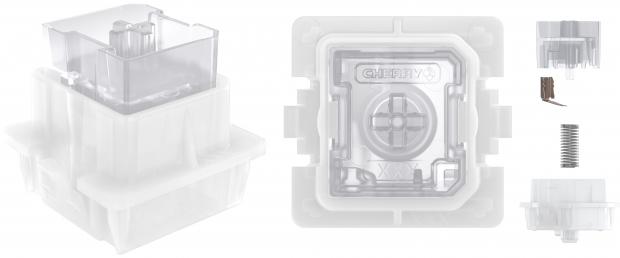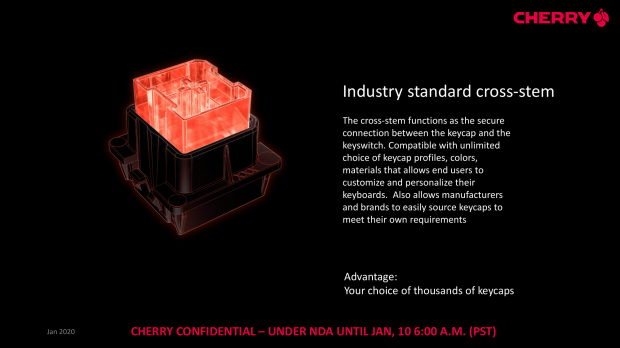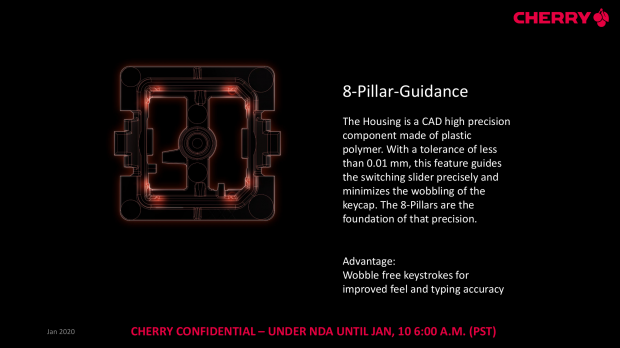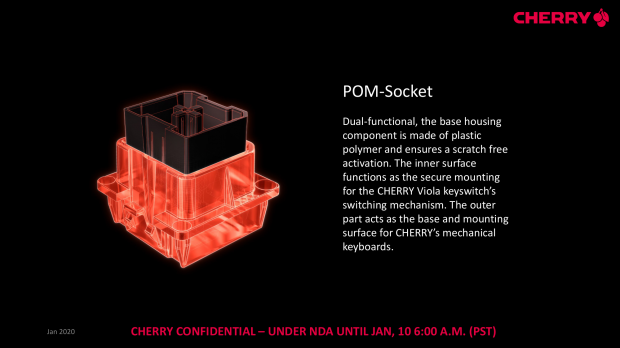CES 2020 - Cherry has been the benchmark for mechanical keyboard switches for quite some time now, and they are making moves to ensure that remains the case. We stumbled across this report from Anandtech from Cherry at CES 2020, and since we did not see Cherry at CES 2020, we wanted to give credit where credit is due.

Mechanical key switches whether you are a mechanical keyboard purist or merely an avid game who has developed a feel for the precise action and predictiveness of mechanical keyboards. You likely have heard of Cherry MX key switches. If you have ever tried to buy aftermarket keycap sets, then you have heard of them as even non-Cherry switches (or clones) have adopted the cross pattern of the Cherry MX stem simply because it has become a standard of sorts. This does, however, cause an issue with segmentation.

Cherry has sat back and made some excellent quality key switches. In contrast, other clones such as the Likes of Kailh and other Chinese market parts that have serviced mechanical keyboard switches for Peripheral manufacturers who could not get enough allocation from Cherry or found the clones more preferable for a lower BOM cost. However, this has led to some less than savory results such as keyboard where they are known to have switches die-off randomly and overall RMA nightmares souring some of the newcomers into the mech keyboard space.
Cherry decided it wanted in on the solution in the value segment, and likely to help ensure manufacturers can have quality boards without the inconsistency issues. To be frank, looking at the slide above, these new Viola switches look rather robust, and the other slides below will show why these may be an excellent option for value boards but with Cherry MX level of QC, engineering, and performance.

The Viola switches are a white/clear mix, which also means they can be RGB, which is almost a must these days for most gaming boards.

As mentioned previously, while the Viola switches have an outer support structure, it still utilizes the familiar cross stem, which is pretty much the standard at this point for custom keycaps, o most keycap sets in general.

One thing that interested me is the exterior perimeter wall, which from Cherrys information is an 8-pillar guide. This outer wall keeps the keycap straight during travel, now allowing some of the wobbles you may have seen in other cherry style switches. This does make me wonder if the new Viola key switches will feel better than existing solutions.

Another area Cherry is improving on a value key switch is their claim to the material usage and something I have seen on various boards. Admittedly including Cherry MX variants as the plastic of the housing and the stem starts to wear together and score the contacting components. This can create a noticeable drag on the switch as the plastic becomes coarse, and the surfaces rub across each other abrasively. Cherry claims with its POM socket that its mix of materials can help avoid this or create a "Scratch free" activation.
This does not mean much until we see boards in the wild with the new Viola switches. Still, you can bet as they roll out, our keyboard aficionado Chad Sebring will be taking them for a spin and give you an idea of how they perform compared to other boards he has had hands-on time with, in our lab.

